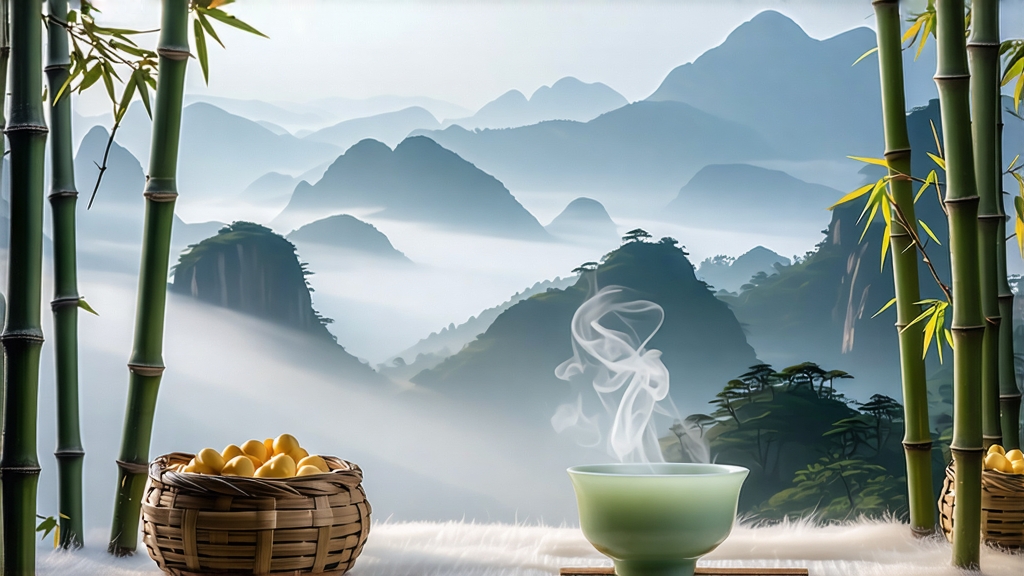
Tucked high in the mist-veiled Dabie Mountains of western Anhui province, Huoshan Huangya has quietly embodied the elegance of China’s rarest tea category for more than fourteen centuries. While green tea dominates export menus and dark pu-erh fills investment vaults, yellow tea—huang cha—remains a whispered legend even inside China. Among the fewer than twenty surviving yellow teas, Huoshan Huangya is the most storied, the most difficult to source, and, when properly handled, the most revelatory in the cup. To understand it is to glimpse the courtly refinement of Tang-dynasty tea artisans and the microscopic choreography of non-enzymatic oxidation that turns a green leaf into liquid topaz.
Historical scrolls first record “Huozhou yellow sprout” in 780 CE when Lu Yu, the sage of tea, noted its shipment to Chang’an as tribute. During the Ming dynasty the tea vanished from court logs, overshadowed by the more transportable Longjing. It re-emerged in 1905 when a retired scholar named Cheng Youting returned to his native Huoshan County and spent three years persuading monks at Jinzhu Temple to resurrect the lost craft. By 1915 Huoshan Huangya won gold at the Panama-Pacific Exposition in San Francisco, yet civil war and market shifts pushed it back into obscurity. Only after 1972—when Premier Zhou Enlai served it to Richard Nixon—did small batches re-enter state banquets, triggering a fragile revival that still depends on a handful of families who control the secretive menhuang (“sealed yellowing”) room.
Botanically the tea is picked from a local small-leaf cultivar, Huoshan Quntizhong, growing between 300 and 800 m on yellow granite soils. The microclimate delivers 92 % humidity at dawn and a 12 °C diurnal swing in late March, condensing mountain mist into a natural shade that slows photosynthesis and amplifies theanine. Farmers pluck only the single bud or bud-with-initial-leaf when 60 % of the tips reach 15 mm, a window that lasts barely five days each year. One kilo of finished tea requires 42 000 hand-selected shoots, roughly the daily yield of four pickers.
The craft unfolds in five labor-intensive stages that differentiate it from both green and lightly oxidized oolong. Shaqing (kill-green) is brief: 80 °C drum roasting for 90 seconds just to denature polyphenol oxidase while preserving a 12 % moisture core. Immediately the leaves are wrapped in thick canvas bundles and transferred to the menhuang chamber, a pine-lined attic kept at 28 °C and 75 % humidity for 72 hours. Here the magic of smothered oxidation occurs: chlorophyll breaks down into pheophytin, catechins dimerize into theaflavins, and a Maillard cascade generates 3-methylbutanal, the molecule that imparts cocoa-like sweetness. Every six hours the master opens each bundle, fans the leaves to dissipate trapped CO₂, then re-wraps with slightly looser tension—an intuitive rhythm learned only through apprenticeship. After three nights the leaf edges turn primrose yellow and emit a scent reminiscent of fresh sorghum. A second, lower-temperature roast at 60 °C sets the color, followed by a painstaking hand-rubbing over bamboo sieves to straighten the buds into sword-shaped needles. Final low baking drops moisture to 5 % without caramelizing sugars, yielding a tea that is technically non-oxidized yet chemically transformed.
To brew Huoshan Huangya respectfully, one must unlearn green-tea habits. Use a tall, thin-walled celadon gaiwan (120 ml) pre-warmed to 85 °C. Measure 3 g of leaf—about two teaspoons—and rinse for three seconds to awaken the dormant aromatics. The first infusion, 45 seconds at 82 °C, releases a pale jonquil liquor with a top note of orchid and steamed edamame. The second infusion, 30 seconds, deepens to honeydew and toasted sesame. By the fourth infusion lengthen to 70 seconds; the cup now tastes of rainwater on granite with a returning sweetness that lingers ten minutes. Seven infusions are possible before the aroma collapses, a stamina that belies the delicacy of the leaf.